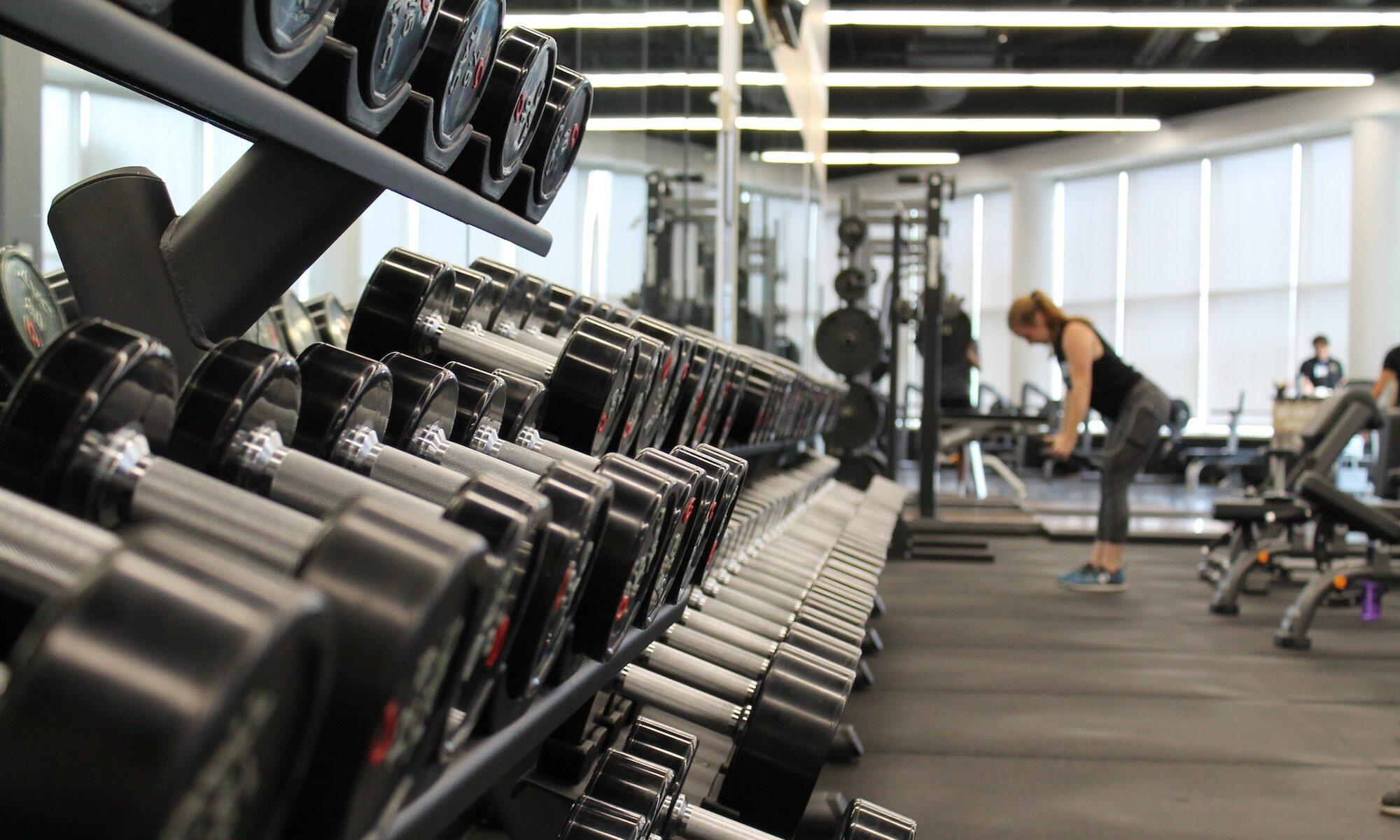Are outdoor workouts the key to fresh air and fitness? Discover the mental and physical benefits, variety of options, and tips for getting started.
Imagine being able to improve your fitness while simultaneously enjoying the beauty of nature and getting a breath of fresh air. Well, outdoor workouts may just be the answer to achieving both of these goals. With the increasing popularity of fitness enthusiasts embracing the great outdoors, it’s no wonder that more and more people are swapping the confines of the gym for invigorating outdoor exercise. From jogging along scenic trails to practicing yoga in serene parks, outdoor workouts provide not only physical benefits but also a much-needed mental escape from our everyday hustle and bustle. So, if you’re looking to inject some excitement into your fitness routine and reap the rewards of nature’s rejuvenating powers, it’s time to lace up your shoes, step outside, and embrace the wonders of outdoor exercise.
Benefits of Outdoor Workouts
Improved mental health
Engaging in outdoor workouts can have a positive impact on your mental health. Being surrounded by nature and natural elements can help reduce stress and anxiety levels, improve your mood, and increase feelings of happiness. The fresh air and sunlight can also have a calming effect on the mind and improve overall mental well-being.
Increased vitamin D levels
One of the major benefits of outdoor workouts is the increase in vitamin D levels. Vitamin D is essential for strong bones and a healthy immune system. When you exercise outdoors, especially during daylight hours, your body gets exposed to sunlight, which is a natural source of vitamin D. This can help combat vitamin D deficiency and promote overall health.
Variety of workout options
Another great advantage of outdoor workouts is the wide range of options available. You can choose from activities such as running, jogging, cycling, hiking, or outdoor fitness classes. These options provide diversity in your fitness routine and ensure that you don’t get bored. Trying different outdoor activities can challenge your body in new ways and target different muscle groups.
Boosted immune system
Exercising outdoors can also boost your immune system. Being in nature exposes you to various natural elements such as soil, trees, and fresh air, which can help strengthen your immune system. Studies have shown that outdoor exercise can increase the production of white blood cells, which are important for fighting off infections and diseases. Regular outdoor workouts can therefore lead to a stronger and more resilient immune system.
The Connection Between Fresh Air and Fitness
Enhanced mood and energy levels
Breathing in fresh air while exercising can have a significant impact on your mood and energy levels. The increased oxygen intake stimulates the release of endorphins, also known as “feel-good” hormones, which can enhance your mood and leave you feeling energized. Outdoor workouts provide a refreshing change of scenery compared to indoor spaces, which can further enhance your overall fitness experience.
Improved lung capacity and oxygen intake
Exercising in the fresh air can also help improve lung capacity and oxygen intake. Outdoor spaces typically have lower pollution levels than indoor gyms or crowded areas, allowing you to breathe in cleaner and healthier air. This can benefit your cardiovascular system, increase lung capacity, and improve overall respiratory health.
Reduced stress and anxiety
Outdoor workouts have been found to be effective in reducing stress and anxiety. The combination of physical activity, fresh air, and the beauty of nature can have a calming effect on the mind and body. Being surrounded by natural elements can help distract from daily stressors and promote a sense of relaxation and peace. Incorporating outdoor workouts into your routine can therefore be a great way to manage and reduce stress levels.
Increased calorie burn
Outdoor workouts can also help increase the number of calories you burn during your exercise session. Activities such as running or cycling in an outdoor setting require more effort and engage different muscle groups compared to working out indoors. The varied terrain and elements of nature can provide a more challenging workout, resulting in a higher calorie burn. This can be beneficial for those looking to lose weight or maintain a healthy body composition.
Outdoor Workout Ideas
Running or jogging
Running or jogging is a popular outdoor workout option that requires minimal equipment. It is a great cardiovascular exercise that can improve endurance, strengthen leg muscles, and burn calories. Whether you prefer running on a road or exploring trails, running outdoors allows you to experience the beauty of nature while staying fit and active.
Cycling
Cycling is another fantastic outdoor workout option that offers both physical and mental benefits. It is a low-impact exercise that can improve cardiovascular health, build leg strength, and enhance overall fitness. Whether you choose to ride on city streets, scenic roads, or mountain trails, cycling allows you to enjoy the outdoors while getting in a great workout.
Hiking or trail walking
Hiking or trail walking is a perfect way to combine fitness with nature exploration. It provides a full-body workout, strengthening the lower body, core, and upper body muscles. Hiking or walking on trails allows you to enjoy beautiful landscapes, breathe in fresh air, and experience the serenity of nature. It is a great option for those who prefer a slower-paced workout while still reaping the benefits of being outdoors.
Outdoor fitness classes
Many fitness studios and trainers offer outdoor fitness classes, which provide a fun and social way to exercise outdoors. These classes can include activities such as boot camps, yoga, Pilates, or high-intensity interval training (HIIT). Participating in outdoor classes allows you to benefit from the expertise of trained instructors while enjoying the fresh air and natural surroundings.
Safety Considerations for Outdoor Workouts
Weather conditions
Before embarking on an outdoor workout, it’s important to consider the weather conditions. Extreme heat, cold, or inclement weather can pose risks to your health and safety. Make sure to check the weather forecast and plan your workout accordingly. Dress appropriately for the temperature and conditions, and consider rescheduling or adjusting your workout routine if the weather becomes unfavorable.
Sun protection
When exercising outdoors, it’s crucial to protect your skin from harmful UV rays. Apply a broad-spectrum sunscreen with a high SPF before heading out, and reapply as needed during longer workouts. Wear protective clothing such as a hat, sunglasses, and lightweight, breathable fabrics that cover exposed skin. This will help prevent sunburn, skin damage, and reduce the risk of skin cancer.
Hydration and nutrition
Staying properly hydrated and fueling your body with the right nutrients is essential for outdoor workouts. Drink plenty of water before, during, and after your workout to maintain hydration levels. Consider carrying a water bottle or using hydration packs during longer activities. Additionally, fuel your body with a balanced diet consisting of carbohydrates, protein, and healthy fats to provide the energy needed for outdoor workouts.
Awareness of surroundings
When exercising outdoors, it’s important to be mindful of your surroundings. Pay attention to your surroundings and potential hazards such as uneven terrain, traffic, or wildlife. Be cautious when crossing roads or paths and choose well-lit areas for workouts during low-light conditions. Stay alert and aware of your surroundings to ensure a safe and enjoyable outdoor workout experience.
Tips for Getting Started with Outdoor Workouts
Check with a healthcare professional
Before starting any new exercise routine, it’s always wise to consult with a healthcare professional, especially if you have any pre-existing conditions or concerns. They can provide personalized guidance and ensure that outdoor workouts are suitable for your individual needs and abilities.
Start gradually
If you’re new to outdoor workouts or have been inactive for a while, it’s important to start gradually and listen to your body. Begin with shorter sessions and low-intensity activities, gradually increasing duration and intensity over time. This will help prevent injuries and allow your body to adapt to the demands of outdoor exercise.
Invest in proper gear
Investing in the right gear and equipment can significantly enhance your outdoor workout experience. Consider purchasing appropriate footwear for the specific activity you’ll be doing, as well as weather-appropriate clothing to keep you comfortable and protected. If you’ll be doing activities such as cycling or hiking, ensure you have the necessary safety equipment, such as helmets or hiking poles.
Find a workout buddy or join a group
Exercising with a workout buddy or joining a group can make outdoor workouts more enjoyable and motivating. Having a companion can provide accountability and support, making it easier to stick to your fitness routine. It can also add a social aspect to your workouts, allowing you to connect with others who share similar interests and goals.
Making the Most of Outdoor Workouts
Utilize natural obstacles
One of the unique advantages of outdoor workouts is the availability of natural obstacles. Use elements such as hills, stairs, or rocks to enhance your exercise routine. Incorporate hill sprints, step-ups, or rock climbing for an added challenge and to engage different muscle groups. Using natural obstacles can add variety and intensity to your workouts, making them more enjoyable and effective.
Incorporate strength training exercises
Don’t limit your outdoor workouts to cardio activities alone. Include strength training exercises to improve muscular strength and endurance. Bodyweight exercises such as push-ups, squats, lunges, and planks can be done anywhere outdoors, without the need for equipment. Incorporating regular strength training into your routine will help build lean muscle mass, increase metabolism, and improve overall body composition.
Take advantage of outdoor equipment
Many parks and outdoor spaces have fitness equipment specifically designed for outdoor workouts. Utilize equipment such as pull-up bars, balance beams, or parallel bars to add variety and challenge to your routine. These outdoor exercise stations provide additional options for strength training and can help target different muscle groups.
Engage in mindful exercises
Outdoor workouts also provide an opportunity to engage in mindful exercises such as yoga or meditation. Find a peaceful spot in nature, such as a park or beach, and practice yoga poses, deep breathing, or meditation. The combination of physical activity and mindfulness can help reduce stress, improve focus, and enhance overall well-being.
Overcoming Challenges in Outdoor Workouts
Weather limitations
Weather can be a significant challenge when it comes to outdoor workouts. Extreme temperatures, rain, or snow might limit your ability to exercise outside. In such cases, consider alternative indoor workouts or modify your routine to adapt to the weather conditions. Options like indoor cardio machines, home workouts, or fitness classes can help you stay active even when the weather doesn’t cooperate.
Safety concerns
While outdoor workouts offer numerous benefits, it’s important to be aware of safety concerns. Choose well-lit areas for workouts during early mornings or evenings, use reflective gear when exercising in low-light conditions, and inform someone about your workout plans, especially if you’ll be in remote areas. It’s always better to exercise with a buddy or in groups when safety is a concern.
Lack of access to outdoor spaces
For some individuals, access to outdoor spaces may be limited depending on their location. In such cases, it can be challenging to find suitable areas for outdoor workouts. However, urban environments often have parks, green spaces, or even rooftop spaces that can be utilized for outdoor exercise. If outdoor spaces are scarce, consider exploring nearby neighborhoods or traveling to parks or recreational areas on weekends.
Seasonal and geographic restrictions
Certain regions may experience extreme weather conditions or seasonal limitations that make outdoor workouts more challenging. For example, icy conditions in winter or scorching heat in summer can restrict outdoor exercise options. During such times, explore indoor fitness alternatives, such as joining a gym, taking classes, or utilizing home workout equipment. Adapting to seasonal and geographic restrictions is crucial for maintaining a consistent fitness routine.
Combining Indoor and Outdoor Workouts
Balance of weather-dependent and indoor workouts
Finding a balance between weather-dependent outdoor workouts and indoor workouts is key to maintaining consistency and variety in your fitness routine. During favorable weather conditions, take advantage of outdoor workouts to enjoy fresh air and nature. On days when the weather is unfavorable, leverage indoor spaces or activities to continue your exercise regime. This balance will ensure that you can stay active and motivated throughout the year.
Transitioning from indoor to outdoor workouts
If you’ve primarily been exercising indoors, transitioning to outdoor workouts can be a refreshing change. Start gradually by incorporating outdoor activities into your existing routine. For example, instead of using a treadmill, go for a run or walk outside. As you become more comfortable with outdoor workouts, you can gradually increase the duration and intensity of your outdoor sessions.
Creating indoor/outdoor circuit routines
Creating indoor/outdoor circuit routines can be an effective way to combine the benefits of both environments. Design a workout routine that includes a mix of exercises done indoors and outdoors. For example, you can incorporate indoor strength training exercises followed by a run or cycling session outdoors. This allows you to enjoy the fresh air while incorporating strength training and cardiovascular exercises into your routine.
Utilizing both environments for optimal fitness
Both indoor and outdoor workouts have their unique advantages, and utilizing both environments can lead to optimal fitness. Indoor spaces provide controlled environments that allow for targeted exercises, while outdoor spaces offer the benefits of fresh air, scenery, and natural elements. By incorporating both indoor and outdoor workouts into your routine, you can maximize the variety, challenges, and benefits of your fitness journey.
Conclusion
Outdoor workouts offer numerous benefits that can enhance your overall well-being. From improved mental health and increased vitamin D levels to a variety of workout options and a boosted immune system, exercising outdoors can provide a holistic approach to fitness. The connection between fresh air and fitness is undeniable, as it can enhance mood and energy levels, improve lung capacity and oxygen intake, reduce stress and anxiety, and increase calorie burn.
Running, cycling, hiking, and outdoor fitness classes are just a few examples of the many workout options available in outdoor settings. However, it’s important to consider safety considerations such as weather conditions, sun protection, hydration, and awareness of surroundings. Taking the necessary precautions will ensure a safe and enjoyable outdoor workout experience.
Getting started with outdoor workouts can be made easier by checking with a healthcare professional, starting gradually, investing in proper gear, and finding a workout buddy or joining a group. Making the most of outdoor workouts involves utilizing natural obstacles, incorporating strength training exercises, taking advantage of outdoor equipment, and engaging in mindful exercises.
Challenges in outdoor workouts, such as weather limitations, safety concerns, lack of access to outdoor spaces, and seasonal/geographic restrictions, can be overcome through adaptation and alternative indoor workout options. Balancing weather-dependent and indoor workouts, transitioning from indoor to outdoor workouts, creating indoor/outdoor circuit routines, and utilizing both environments for fitness can help maintain a consistent and varied fitness routine.
In conclusion, outdoor workouts offer a unique and beneficial way to stay fit and active. The fresh air, natural elements, and connection to nature enhance the overall fitness experience. Finding the right balance between indoor and outdoor workouts will enable you to enjoy the benefits of both environments and find what works best for your individual needs. So, lace up your shoes, head outside, and embark on a fitness journey that combines the benefits of fresh air and exercise.


